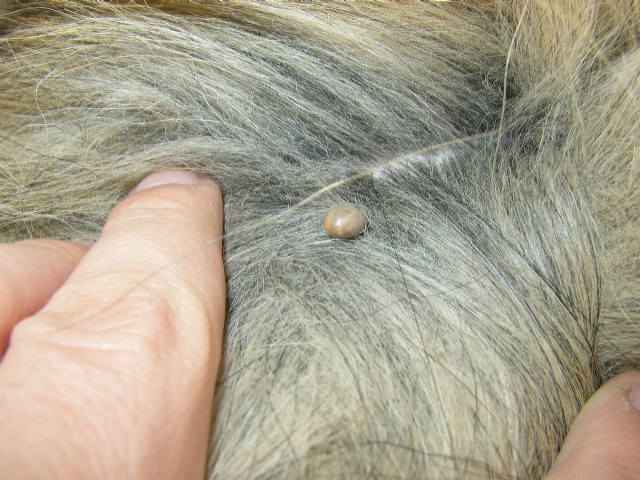8 Little Known Fact About Fleas and Ticks
By Adrienne Farricelli
Without a shadow of doubt, we all love our dogs, but we surely aren’t fond of those pesky parasites which hitchhike on our beloved pooches and end up inside our homes where they reproduce freely quickly causing an infestation problem. One of the most common parasites found on dogs are fleas and ticks. How much do you know about them? Knowledge is ultimately power, as only by knowing your enemies well you can better eradicate them from your best friend and your comfy fortress.
Getting to Know Fleas Better
Nobody wants to get close and intimate with fleas, but it’s inevitable if you live in an area where these parasites thrive. Many dog owners confess they have never seen fleas until they have introduced dogs and cats in their homes. These critters come in small packages, but their effects on your companion can be quite big. Your dog will itch and scratch miserably and look at you with a pitiful face asking for help. Following are four little known facts about fleas.
Their Saliva Can Cause Issues
It’s easy to point the finger at fleas for causing that annoying scratching, but hold your horses before blaming them. Truth is, it’s often not the flea per se to cause that intense itching; rather, it’s an allergic reaction to their saliva. According to veterinarian Ron Hines, when fleas bite, they insert their mouth parts into the dog’s skin and their saliva contains an anticoagulant that makes the blood flow freely so they can easily enjoy their meal. It’s this saliva that turns out being highly irritant to some dogs which develop generalized itching. All it takes is just one flea for an upsetting bout of itching and scratching to start. To make things even worse, the constant licking, biting and scratching to ease the itch, may trigger an annoying skin infection.
They Leave Undeniable Proof ‘Behind”
Wondering if your dog has fleas? There’s an easy way to find proof of their presence. Consider yourself extra lucky if you own a dog that has a light colored coat. If you look carefully at your dog’s coat and see something that looks like dirt, chances are, you may be looking at flea droppings. Not too sure? Simply grab a little of that “dirt” and place it on a wet paper towel. If it assumes a reddish tint, you’re dealing with flea dirt which is simply digested blood. A fun fact: female fleas are true vampires, they’re indeed capable of consuming about 15 times their body weight of blood in their lifetime!
They Can Mutate into Worms
OK, this is a bit of an exaggeration, as they obviously can’t directly turn into worms, but if your dog ingests an infected flea, he may end up with tapeworms. How is that? Fleas act as intermediate hosts for tapeworms. So if say your dog is grooming himself, and he accidentally ingests an infected flea, once in the dog’s intestinal tract the flea’s body will break down releasing larvae which attach to the dog’s intestinal lining and grow into adult tapeworms. Another good reason to get rid of fleas.
Fleas on Your Dog are Only the Tip of the Iceberg
One of the biggest mistakes dog owners make in fighting fleas is only treating the pet. Truth is, if you only treat your dog by applying topical products to his coat, you’ll likely see fleas again very soon. To say “Sayonara” once and for all, you’ll need to treat the environment as well. It’s a hard fact to accept, but female fleas lay about 20 to 30 eggs a day and these eggs often fall to the ground which means on your dog’s bedding, your carpet and even your bed if your pet is allowed up there. To completely eradicate fleas, you must therefore treat the dog and the dog’s indoor and outdoor environment. Look for insect growth regulators which kill adult fleas and all the flea’s other life stages.
Getting to Know Ticks Better
If you thought fleas were bad enough, wait until you learn more about ticks. Like fleas, ticks are attracted to your dog’s blood and just can’t wait to feast on him. Unlike fleas though, ticks are not bugs; rather they are arachnids, which makes them related to spiders. Following are four important facts about ticks.
They Cause Diseases to People and Dogs
Depending on where you live, ticks can be carriers of several debilitating diseases transmitted to both dogs and people. Lyme disease, Rocky Mountain spotted fever, erlichiosis, anasplamosis and babeiosis are just a few examples of tick-born diseases found across the globe. Learning how to recognize tick-borne disease in dogs is important if you live in a tick-infested area, but most importantly, you want to work on prevention. Luckily there are many products that can help keep them at bay.
Timing is of the Essence
The risk for tick-borne disease gets much higher the longer the tick is attached to the dog’s skin. This is why it’s a good reason to often check your dog’s coat for the presence of these parasites. According to the Food and Drug Administration Newsletter, when a tick is removed within 24 hours, the chances for Lyme disease and other infectious tick-born diseases lowers.
Avoid Stressing them Out
It takes a certain strategy to safely remove ticks from your dog. Avoid jerking, twisting, burning the tick with a cigarette or a match or pouring kerosene or nail polish on the critter. These strategies cause the tick to be in distress and cause it to expel contents of its digestive tract into the wound and can even put you at risk for cross-contamination if the tick is infected and you have an open cut. The correct way to remove ticks is to simply get a pair of tweezers or a tick removing tool and pull straight up without squeezing the tick’s body. It’s a good idea to wear gloves.
Don’t Let Ticks Lose Their Heads
When you grasp a tick with the tweezers or those special tick-removing tools, make sure you grasp firmly as close to the dog’s skin as possible right where the tick’s head and neck attach. Don’t squeeze or twist or the head may break off and remain embedded in the dog’s skin. If the head remains embedded, it may cause a local reaction but it will then work its way out on its own.



